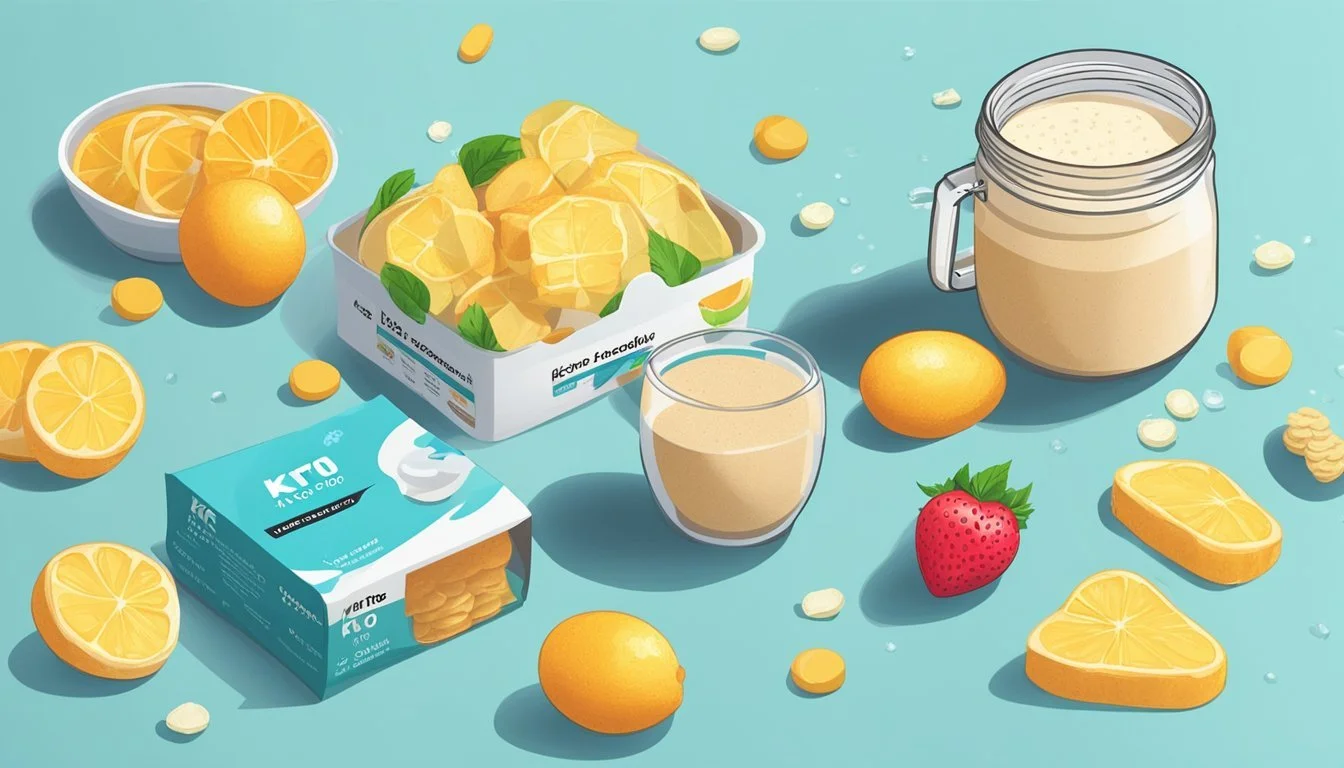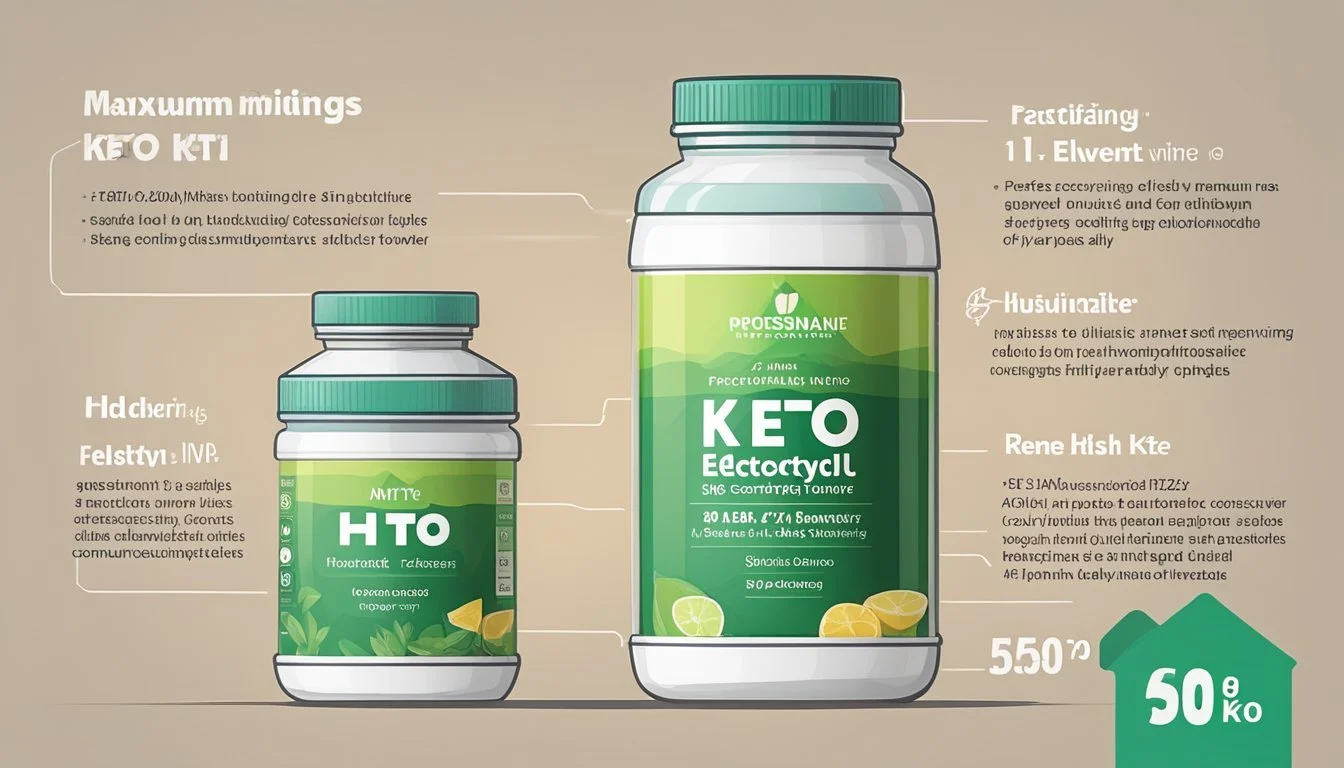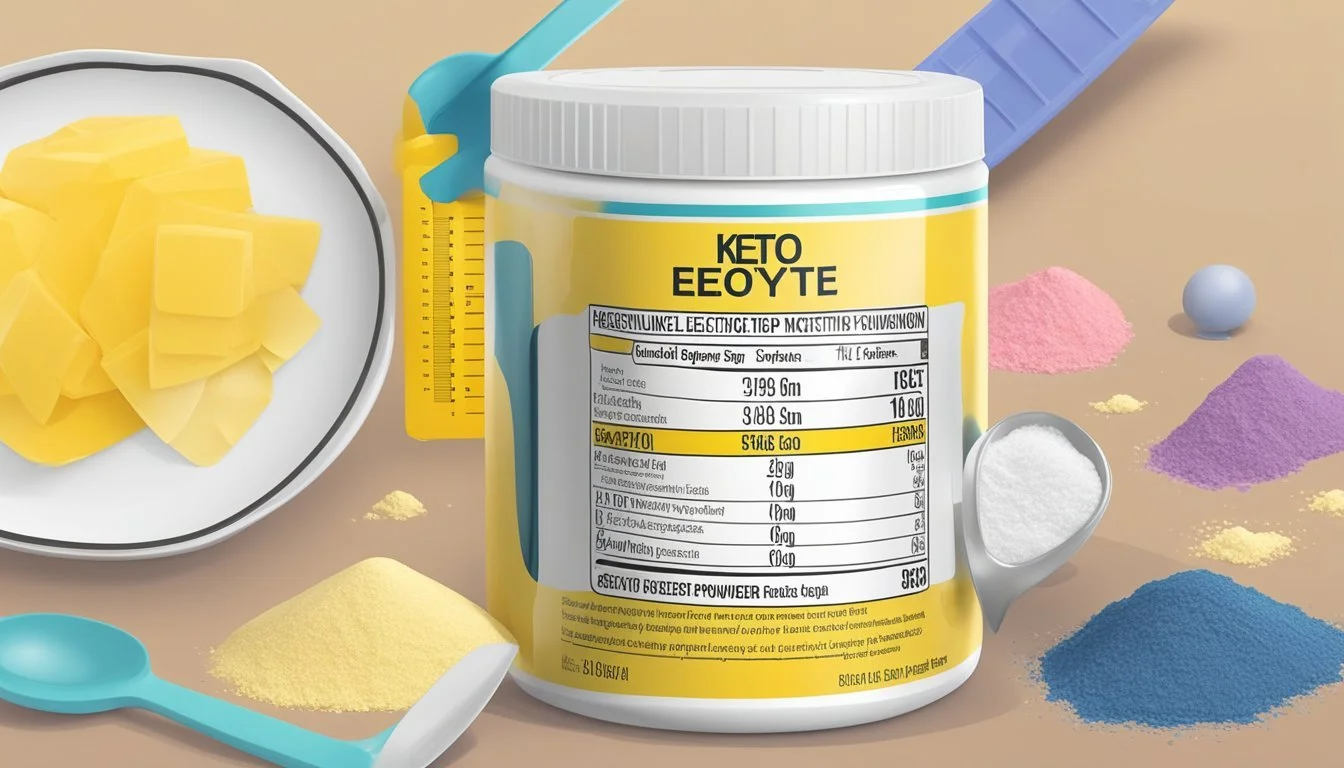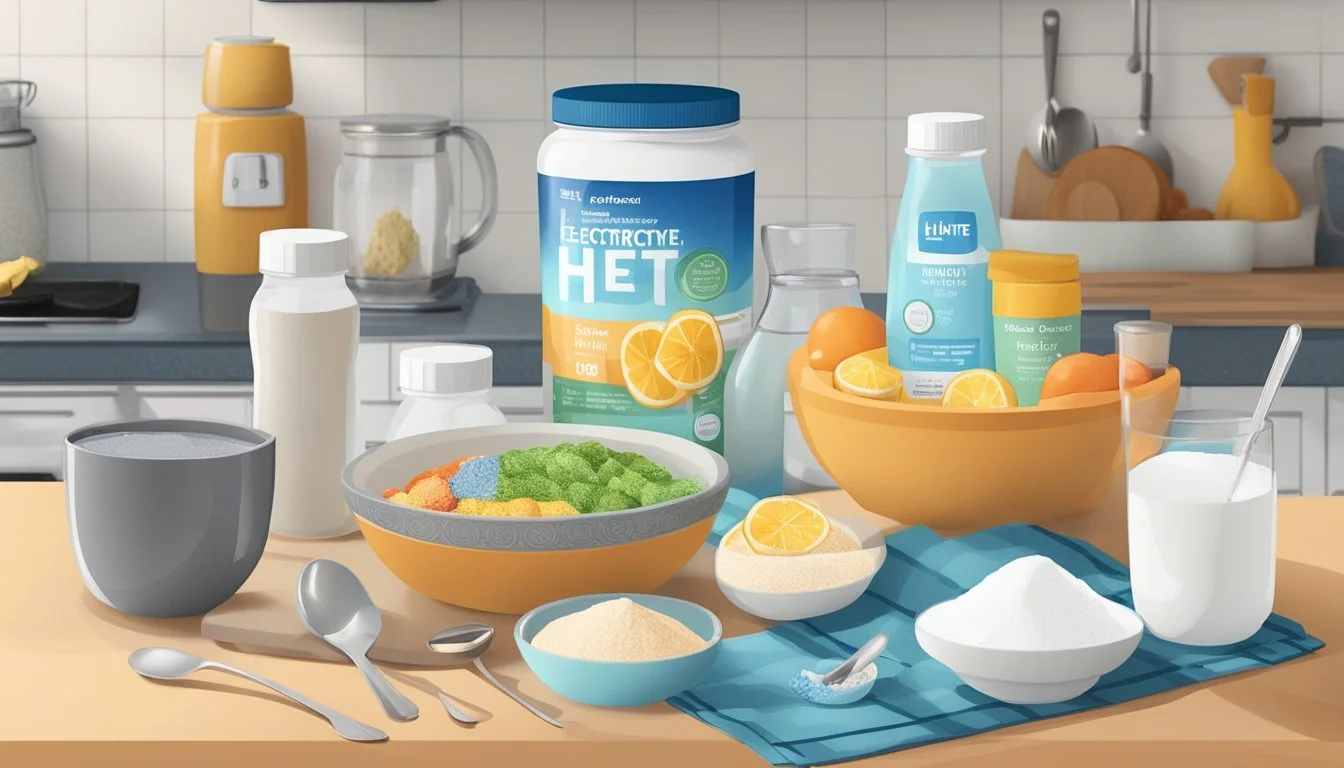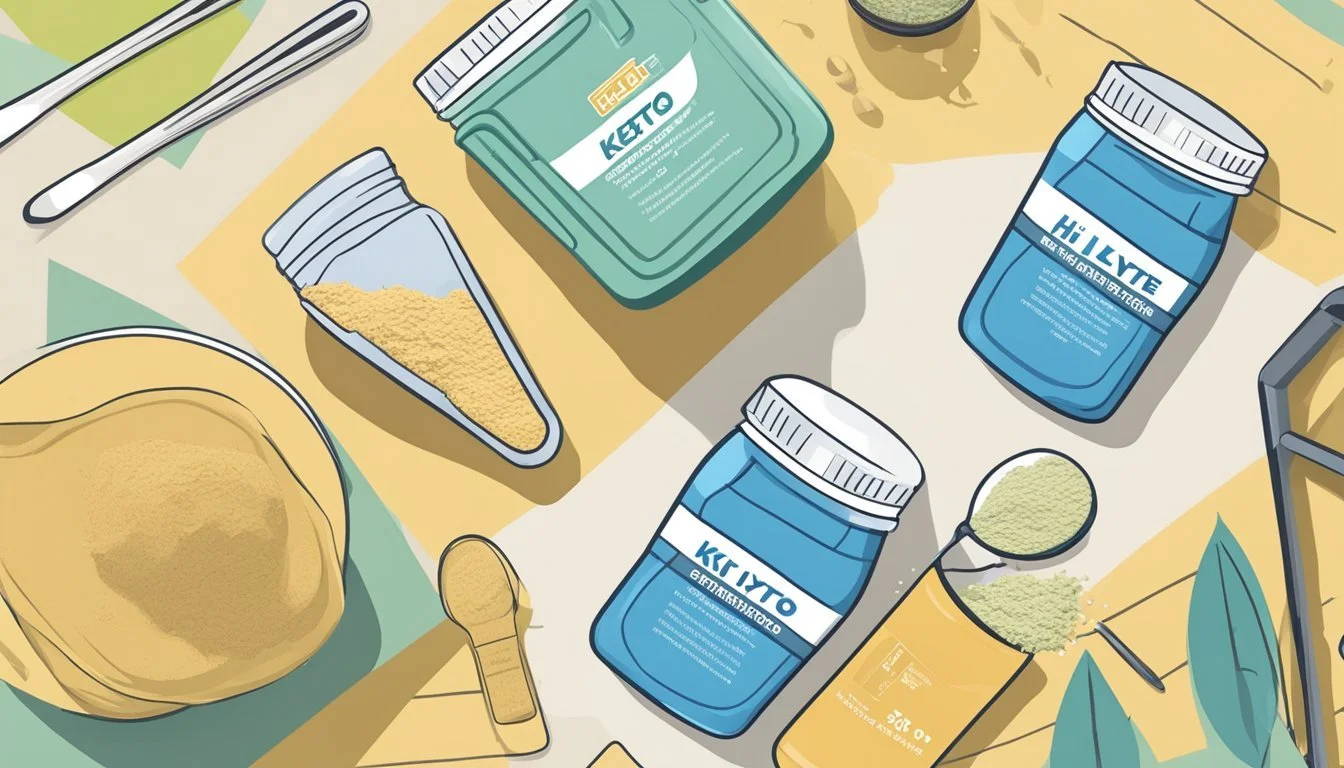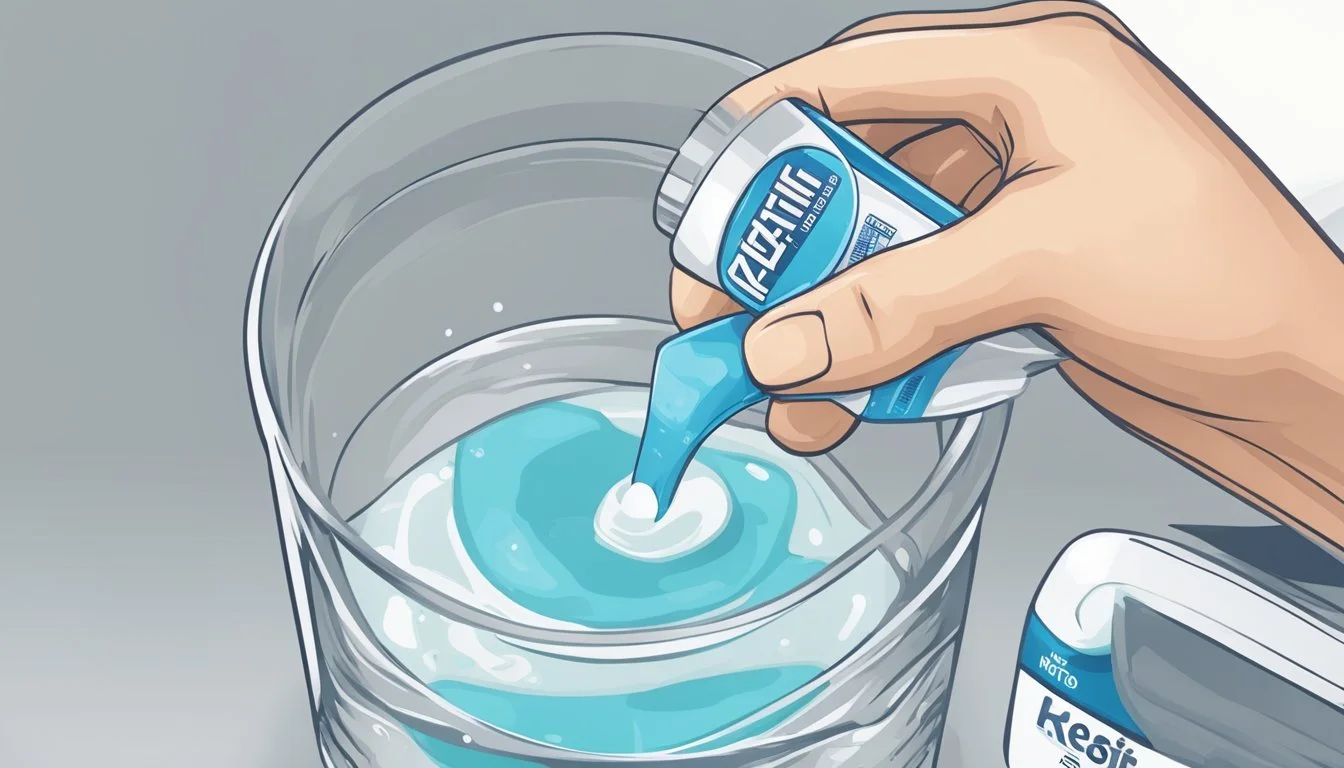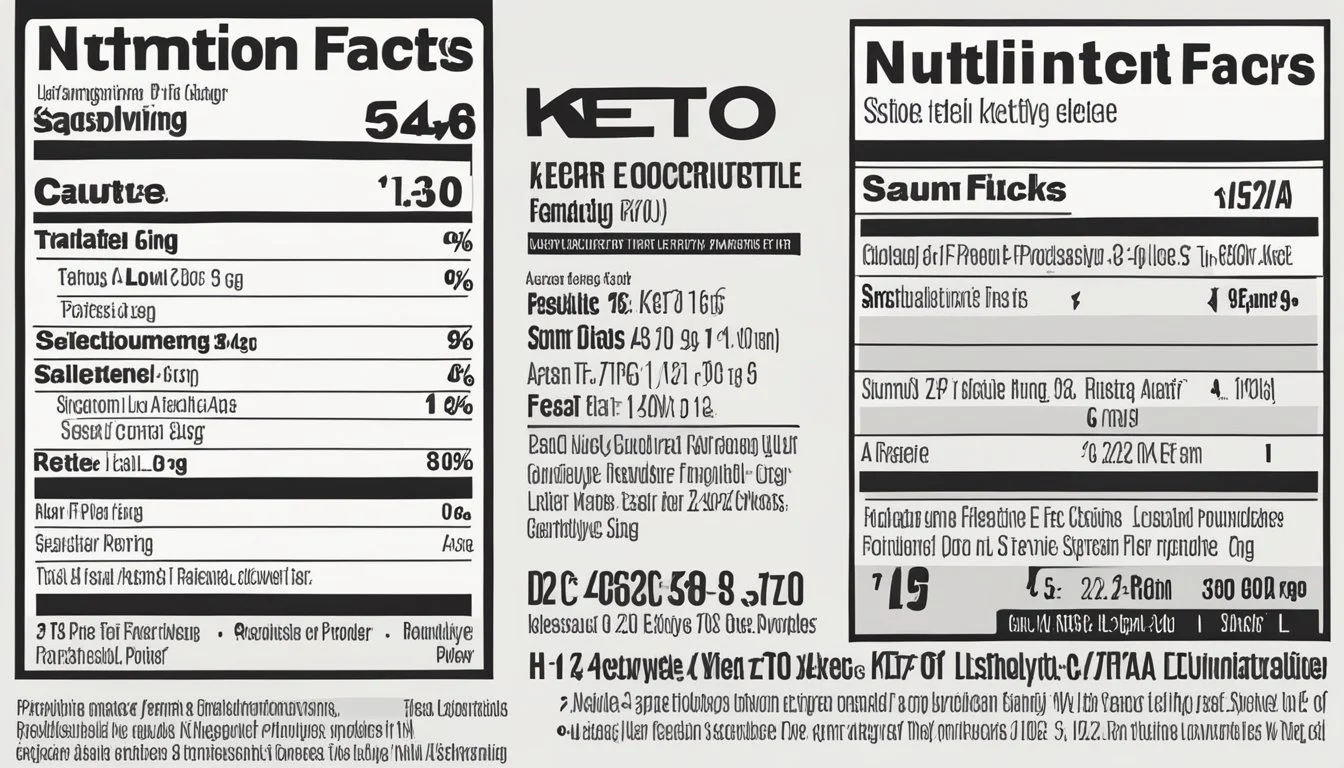How Many Servings of Hi-Lyte Keto Electrolyte Powder Is Too Much
Expert Guidelines
For those on a ketogenic diet, maintaining proper electrolyte balance is crucial for success and well-being. Hi-Lyte Keto Electrolyte Powder offers a potent blend of potassium, calcium, magnesium, and more to help with hydration and energy levels. With each serving containing 1,000 milligrams of potassium, it's specifically designed to prevent common keto-related issues like leg cramps and keto flu.
Consuming more than 3 servings of Hi-Lyte Keto Electrolyte Powder per day is generally considered excessive and may lead to undesirable effects. While electrolytes play a key role in hydration and muscle function, an overload can result in imbalances that adversely affect your health. Symptoms of electrolyte imbalance can include nausea, abdominal pain, and irregular heartbeats.
It's essential to consider your individual health needs and consult a healthcare provider when determining the appropriate amount of electrolyte supplementation. The body’s requirement for electrolytes varies with factors like activity level, diet, and overall health. While Hi-Lyte Keto Electrolyte Powder is a valuable tool for those following a keto lifestyle, moderation and mindful consumption are key to reaping its benefits.
Understanding Electrolytes and Keto Diet
The role of electrolytes is crucial in maintaining health, especially on a keto diet where carbohydrate intake is limited. Managing electrolyte balance helps avoid common issues like dehydration and muscle cramps.
Role of Electrolytes in the Keto Diet
Electrolytes, including sodium, potassium, magnesium, and chloride, play vital roles in various bodily functions. On a keto diet, the body's reduction in insulin levels leads to decreased water retention, causing an increased loss of electrolytes through urine.
Sodium: Essential for water retention and muscle function.
Potassium: Helps prevent muscle cramps and supports cardiovascular health.
Magnesium: Important for muscle relaxation and reducing the risk of muscle spasms.
Chloride: Works with sodium to maintain fluid balance and blood pressure.
Supplements and proper diet can help maintain these levels.
Common Electrolyte Imbalances on Keto
The reduced carbohydrate intake on a ketogenic diet can often lead to electrolyte imbalances. Common imbalances include low sodium, potassium, and magnesium levels due to their increased excretion.
This can result in a phenomenon known as "keto flu," characterized by symptoms such as headache, fatigue, dizziness, and irritability. It's crucial to monitor electrolyte intake to avoid these symptoms and maintain proper hydration.
Signs of Electrolyte Imbalance
Signs of electrolyte imbalance on a keto diet can vary but are often apparent and uncomfortable. Common signs include leg cramps, headaches, fatigue, and dizziness. Severe imbalances might even lead to more serious health issues such as heart palpitations or convulsions.
Recognizing these signs early and adjusting your diet or supplement intake accordingly can help manage your health effectively on a keto diet. Maintaining proper hydration and electrolyte balance is key to avoiding these issues.
Hydration and Keto Lifestyle
Balancing hydration is crucial, particularly when following a keto diet. Proper hydration helps manage the transition to ketosis and supports overall well-being during an active lifestyle.
Importance of Hydration on Keto
Hydration is essential for those on a keto diet. As the body transitions to ketosis, it loses more water and electrolytes due to reduced glycogen levels. This can lead to symptoms like the "keto flu," including headaches, fatigue, and irritability. Maintaining adequate hydration helps mitigate these issues.
Electrolyte supplements, such as Hi-Lyte Keto Electrolyte Powder, can provide essential minerals like potassium, sodium, and magnesium. These minerals support muscle function and prevent cramps. They are particularly useful for athletes or those engaging in regular physical activity. Drinking sufficient water and replenishing electrolytes in the body ensures better performance and recovery.
Hydrating Foods and Drinks
Certain foods and drinks can boost hydration on a keto diet. Water-rich fruits like watermelon are excellent, though in moderation due to their carb content. Vegetables such as cucumbers and celery are also recommended. Eating these can help meet hydration needs without excessive carbs.
Sparkling water is another keto-friendly option for those who prefer flavored drinks without added sugars. Adding an electrolyte concentrate to water can also enhance hydration. Products like Hi-Lyte Keto K1000 offer sugar-free options compatible with keto. Hydration packs can be convenient for those on the go, providing an easy way to stay hydrated and replenish electrolytes quickly.
Hi-Lyte Keto K1000 Electrolyte Powder
Hi-Lyte Keto K1000 Electrolyte Powder is designed to provide high levels of potassium and other essential electrolytes. It is intended to help with hydration, increase cellular energy, and support those on Keto diets.
Key Features of Hi-Lyte Keto K1000
Ingredients: Hi-Lyte Keto K1000 includes potassium, calcium, magnesium, chloride, and sodium, among others. Each serving contains 1,000 milligrams of potassium, which is especially useful for those experiencing leg cramps or the "Keto flu."
Flavors: Available in varieties such as Raspberry Lemon and Watermelon, the powder is unflavored as well. This gives users flexible options depending on their taste preferences.
No Sugar or Maltodextrin: This product is specifically formulated to exclude sugar and maltodextrin, making it suitable for a Keto diet.
Serving Size: One scoop mixed into 16 oz of water, with each container offering approximately 50 servings.
Review Ratings: On platforms like Amazon, it has garnered a rating of 4.3 out of 5 stars from over 10,600 reviews, indicating high customer satisfaction.
Comparing With Other Keto Electrolyte Supplements
Hi-Lyte Keto K1000 stands out for its high potassium content compared to other electrolyte powders. Most competitors offer lower levels of potassium, focusing more on a blend of ingredients without the specific high-potassium design.
Price Comparison: The price per serving tends to be competitive. Given the 50 servings per container, it offers a cost-effective option for daily use, particularly for those requiring consistent electrolyte replenishment.
Effectiveness: Users have noted its efficacy in promoting endurance and eliminating cramps. These features make it particularly attractive to individuals on Keto diets who are prone to electrolyte imbalances.
In terms of flavor versatility, Hi-Lyte Keto K1000's various options can be more appealing compared to competitors that offer fewer or less palatable flavors. This adds an element of customization based on individual taste preferences.
Utilizing both succinct and detailed information ensures that readers have a clear, comprehensive understanding of Hi-Lyte Keto K1000 without unnecessary elaboration.
Nutritional Content and Benefits
Hi-Lyte Keto K1000 Electrolyte Powder is designed to support hydration, cellular energy, and help alleviate symptoms associated with the keto diet. Key components include essential minerals and vitamins that play significant roles in various bodily functions.
Essential Minerals and Vitamins in Hi-Lyte Keto K1000
The Hi-Lyte Keto K1000 formula includes potassium, magnesium, sodium, and calcium. These minerals are crucial for maintaining electrolyte balance.
Potassium: Each serving provides 1,000 mg of potassium, important for muscle function and preventing cramps.
Magnesium: This also aids in muscle function, nerve transmission, and supports energy production.
Sodium: Critical for maintaining fluid balance and preventing dehydration.
Calcium: Supports bone health and is necessary for muscle contraction.
Trace minerals such as zinc are also present, supporting immune function and enzyme reactions. These minerals and vitamins are carefully balanced to avoid the calorie and sugar content typical in many other supplements.
Benefits of Trace Minerals and Vitamins
The inclusion of trace minerals and vitamins in Hi-Lyte Keto K1000 offers multiple benefits.
Hydration: Sodium, potassium, and magnesium enhance fluid retention and prevent dehydration.
Energy Production: Magnesium is vital in converting food into energy.
Muscle Health: Potassium and magnesium both prevent muscle cramps, a common issue during intense workouts or following a keto diet.
Immune Support: Zinc helps bolster the immune system.
By providing these essential nutrients, Hi-Lyte Keto K1000 aims to improve overall physical function and well-being, particularly for those adhering to a keto or intermittent fasting lifestyle.
Optimal Consumption for Maximum Benefits
To achieve the best results with Hi-Lyte Keto K1000 Electrolyte Powder, it's important to determine the right amount to take and recognize signs of excessive intake that could indicate overconsumption.
Determining the Right Amount of Hi-Lyte Keto K1000
The recommended serving size of Hi-Lyte Keto K1000 is critical for maximizing its benefits without adverse effects. Each serving provides 1,000 milligrams of potassium, addressing common deficiencies in many diets.
Typical Usage:
Standard Serving: 1,000 mg of potassium per serving
Daily Requirement: Approximately 4,700 mg of potassium
Suggested Intake:
Active Individuals: 1-2 servings per day
Sedentary Individuals: 1 serving per day
Monitoring potassium levels is crucial, especially for those on keto diets or with high physical activity. Consult with a healthcare provider to personalize intake.
Signs of Excessive Intake
Excessive intake of Hi-Lyte Keto K1000 can lead to hyperkalemia, a condition characterized by too much potassium in the blood. Recognizing these signs helps prevent potential health risks.
Symptoms to Watch For:
Muscle Weakness: Cramping or reduced strength
Nausea: Upset stomach, vomiting
Heart Palpitations: Irregular heartbeat
Fatigue: Unusual tiredness or lethargy
Preventative Measures:
Regular Monitoring: Check blood potassium levels
Adjust Intake: Reduce servings if symptoms arise
Being aware of these symptoms and adjusting consumption accordingly ensures safe and effective electrolyte supplementation with Hi-Lyte Keto K1000.
Athletic Performance and Recovery
Proper electrolyte balance is crucial for athletes to maintain optimal performance and recover effectively. Hi-Lyte Keto Electrolyte Powder can help meet these specific needs by promoting hydration, muscle recovery, and sustained energy levels.
Enhancing Workout and Recovery with Electrolytes
Electrolytes like sodium, potassium, and magnesium play a critical role during and after workouts. They help regulate nerve functions, muscle contractions, and hydration. Athletes, especially cyclists, runners, and swimmers, may experience significant fluid and electrolyte loss through sweat.
Hi-Lyte Keto Electrolyte Powder provides 1,000mg of potassium per serving, which supports proper muscle function and prevents cramps. Additionally, adequate potassium intake can reduce the risk of fatigue and nausea during intense exercise.
Including this supplement in a balanced routine helps athletes quickly restore electrolyte levels. This aids in faster muscle recovery, minimizing downtime between workouts and enabling sustained peak performance.
Electrolyte Support for Athletes
Electrolyte supplements are essential for athletes to replace minerals lost during intense exercise. Hi-Lyte Electrolyte Concentrate contains sea minerals like ionic magnesium and zinc, necessary for energy production and muscle repair.
For short-duration exercises under two hours, athletes benefit from a supplement with 120-160mg of sodium and 50-100mg of potassium per serving. For endurance athletes engaged in extreme activities, higher electrolyte content is vital.
Hi-Lyte products provide a concentrated source of these nutrients without added sugars or calories, making them suitable for various dietary needs, including keto diets. Regular intake helps maintain electrolyte balance, ensuring that athletes stay hydrated and perform at their best.
Potential Side Effects and Precautions
When consuming Hi-Lyte Keto Electrolyte Powder, it's essential to be aware of possible side effects and take necessary precautions to avoid adverse effects.
Managing Side Effects of Overconsumption
Overconsumption of electrolytes can lead to an imbalance in the body, producing various symptoms.
Excessive sodium intake may cause high blood pressure and increase the risk of heart-related issues.
Too much potassium might lead to irregular heartbeats, fatigue, and muscle cramps.
Magnesium overuse can result in nausea, headaches, and diarrhea.
Users experiencing severe symptoms like confusion, difficulty breathing, or chest pain should seek medical attention immediately.
To manage these side effects, individuals should monitor their electrolyte levels, stay hydrated, and follow recommended dosage instructions.
Precautions When Using Electrolyte Supplements
Hi-Lyte Keto Electrolyte Powder users should follow several precautions to minimize risks.
First, people with kidney issues should consult a healthcare provider before use.
Regular monitoring of bodily electrolyte levels is advisable, as an imbalance can lead to dehydration or excessive hydration.
Mixing the powder accurately also prevents energy depletion, leg cramps, and other related symptoms.
Athletes or those engaging in intense physical activity might need to adjust their intake based on their unique requirements and sweat loss.
Always adhere to recommended daily intakes, and avoid combining multiple electrolyte supplements without professional guidance.
Lifestyle Considerations and Dietary Habits
Balancing electrolyte intake with lifestyle and dietary habits is crucial for maintaining optimal health, especially for those following a ketogenic diet. In this section, we will explore hydration needs for keto dieters and how to incorporate Hi-Lyte Keto K1000 into a healthy routine.
Keto Dieters’ Hydration Needs
Individuals on ketogenic diets often experience increased water loss due to reduced carbohydrate intake. High-carb foods help retain water, so the shift to a low-carb diet can lead to dehydration.
Adequate hydration is essential to avoid symptoms like the keto flu, muscle cramps, and fatigue. Electrolytes, including potassium, sodium, and magnesium, are critical for maintaining fluid balance. Foods such as avocado and nuts can help, but supplements like Hi-Lyte Keto K1000 may be necessary for those with higher activity levels.
Hydration strategies include drinking water consistently throughout the day and integrating electrolyte-rich beverages before, during, and after workouts.
Incorporating Hi-Lyte Keto K1000 into a Healthy Routine
Hi-Lyte Keto K1000 is designed to replenish essential electrolytes with 1,000 milligrams of potassium per serving. This is especially beneficial for active individuals who might experience significant sweat loss during exercise.
Intermittent fasters can also benefit from including Hi-Lyte Keto K1000 during their eating windows to support overall hydration and energy levels. It’s recommended to take Hi-Lyte with meals or mixed into water to aid in absorption.
For balance, maintaining a diet rich in electrolyte-friendly foods and using supplements to fill any gaps helps support general health and bone health. Proper integration of Hi-Lyte Keto K1000 into daily routines can be tailored to specific activity levels and dietary preferences for best results.
Consumer Insights and Market Comparison
Hi-Lyte Keto K1000 Electrolyte Powder has generated various feedback from users and shows distinct strengths when compared to competitor brands.
User Experience and Reviews
Users of Hi-Lyte Keto K1000 Electrolyte Powder appreciate its rapid hydration and energy-boosting properties. Many mention its sugar-free and gluten-free formulation as significant pros, aligning with their dietary restrictions.
Some common positive reviews highlight its effective balance of ionic sea minerals and that it impressively supports those on a ketogenic diet. Negative feedback is rare but typically concerns its taste, which some users find less palatable compared to flavored options like LMNT or Liquid I.V.
Price-wise, it is seen as a worthy investment with a cost close to $0.75 per serving, comparable to other premium brands.
Comparative Analysis With Competitor Brands
When compared to brands like Ultima, LMNT, and Key Nutrients, Hi-Lyte Keto K1000 stands out for its ionic sea mineral content. While Ultima is praised for its broad flavor variety and zero-carbs formula, Hi-Lyte's specific keto-friendly attributes give it an edge among ketogenic diet followers.
Liquid I.V. offers robust hydration benefits but includes carbs, making it less suitable for keto practitioners. Dr. Berg and Re-Lyte also cater well to the keto crowd but differ in mineral and ingredient compositions.
In terms of pricing, Hi-Lyte is competitively priced, ensuring high-quality supplementation without excessive cost, making it a strong contender in the electrolyte supplement market.
Product Application and Usage Tips
Using Hi-Lyte Keto K1000 Electrolyte Powder effectively involves understanding the right dosage for daily life and finding creative ways to incorporate it into your diet. Here are some key tips to enhance your experience.
How to Use Hi-Lyte Keto K1000 in Daily Life
For optimal hydration and electrolyte balance, it is recommended to mix one scoop of Hi-Lyte Keto K1000 into 16 oz of water. This ensures you receive 1,000mg of potassium along with other essential minerals.
Start with one serving per day. Monitor your body's response, especially if you're new to electrolyte supplements. For active individuals or those following a strict keto diet, up to two servings may be beneficial, but consult a healthcare professional before increasing the dose.
Recipes and Creative Ways to Include in Diet
Hi-Lyte Keto K1000 can be incorporated into a variety of beverages to suit your taste. The raspberry lemon flavor works well in homemade lemonade. Simply mix a scoop with water, fresh lemon juice, and a natural sweetener like stevia or monk fruit.
For a refreshing twist, try adding the powder to smoothies. Blend it with your favorite fruits, vegetables, and a liquid base of your choice. This not only enhances the flavor but also boosts the drink's electrolyte content.
Experiment with different combinations to find what works best for you while maintaining the recommended serving size.
Understanding Supplement Labels and Ingredients
When examining supplement labels, it is crucial to comprehend the nutritional content and identify any additives or fillers present. This can ensure that the supplement meets dietary needs and preferences.
Decoding the Nutritional Information on Labels
Paying close attention to nutritional information on supplement labels reveals the levels of key ingredients like electrolytes, added sugars, and total carbohydrates.
For instance, Hi-Lyte Keto Electrolyte Powder contains 1,000 milligrams of potassium per serving, which is beneficial for those prone to leg cramps. It's also sugar-free, aligning well with keto diet requirements.
Beyond core ingredients, look for labels displaying information about whether a supplement is vegan, non-GMO, and gluten-free. These details can affect dietary suitability and health outcomes.
Identifying Additives and Fillers in Supplements
Identifying any fillers or artificial additives in supplements is crucial for overall health. Common fillers include maltodextrin, cellulose, and magnesium stearate, which can be present in capsule forms to aid in manufacturing but may be unnecessary and undesirable for health-conscious consumers.
Hi-Lyte products tout their lack of artificial ingredients and no calories or carbs, making them a cleaner choice compared to some traditional electrolyte supplements that might contain additives for flavor or color. Always check the ingredient list for minimal additives and no added sugars to ensure a purer product.




